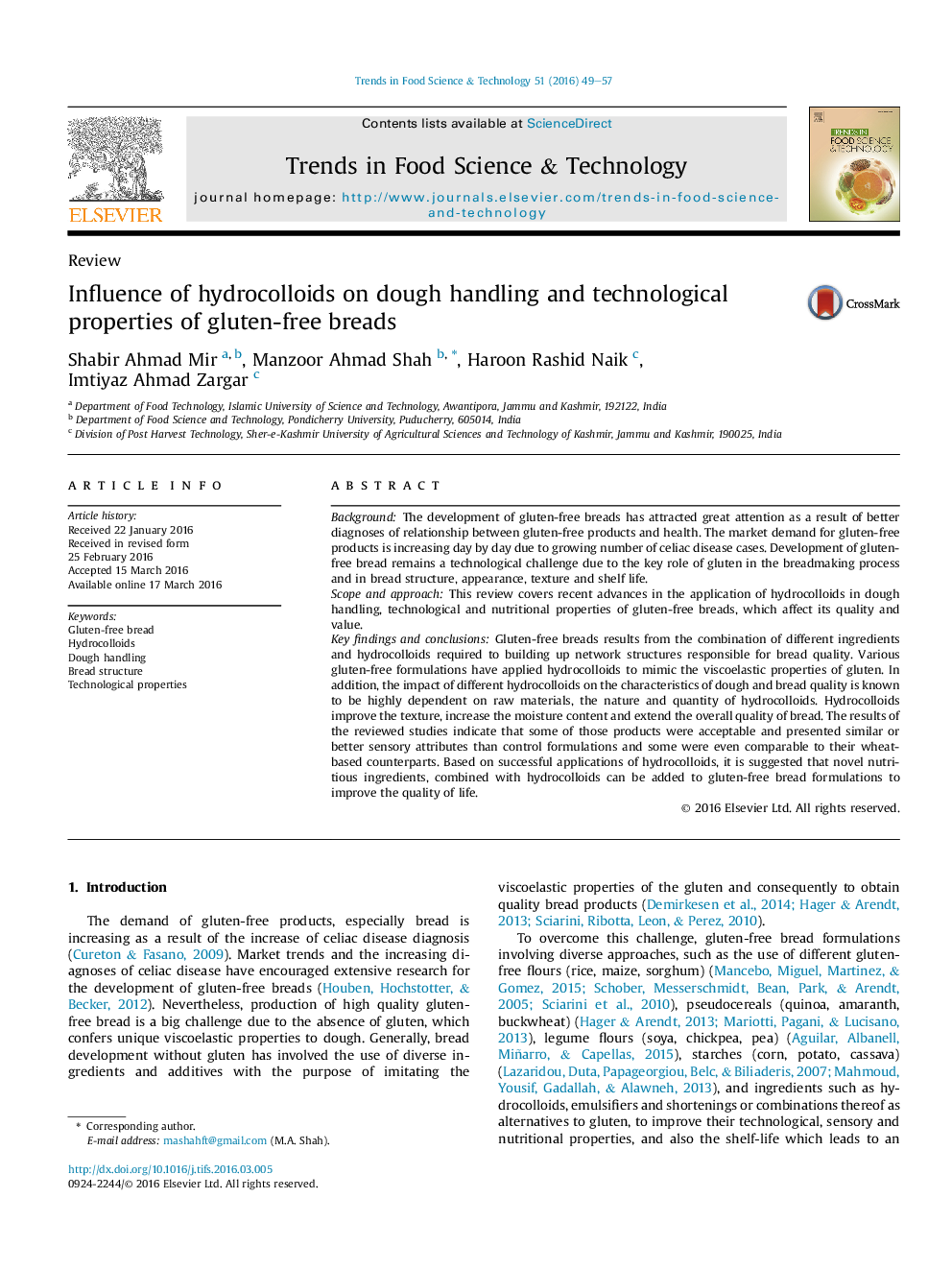| کد مقاله | کد نشریه | سال انتشار | مقاله انگلیسی | نسخه تمام متن |
|---|---|---|---|---|
| 2098523 | 1546127 | 2016 | 9 صفحه PDF | دانلود رایگان |
• Production of high quality gluten-free breads is a big challenge for the baking industry.
• Hydrocolloids play an important role in the production gluten-free breads.
• Hydrocolloids significantly affect the dough handling and technological properties of gluten-free breads.
• Gluten-free breads show diverse nutritional properties incorporated with various functional ingredients.
BackgroundThe development of gluten-free breads has attracted great attention as a result of better diagnoses of relationship between gluten-free products and health. The market demand for gluten-free products is increasing day by day due to growing number of celiac disease cases. Development of gluten-free bread remains a technological challenge due to the key role of gluten in the breadmaking process and in bread structure, appearance, texture and shelf life.Scope and approachThis review covers recent advances in the application of hydrocolloids in dough handling, technological and nutritional properties of gluten-free breads, which affect its quality and value.Key findings and conclusionsGluten-free breads results from the combination of different ingredients and hydrocolloids required to building up network structures responsible for bread quality. Various gluten-free formulations have applied hydrocolloids to mimic the viscoelastic properties of gluten. In addition, the impact of different hydrocolloids on the characteristics of dough and bread quality is known to be highly dependent on raw materials, the nature and quantity of hydrocolloids. Hydrocolloids improve the texture, increase the moisture content and extend the overall quality of bread. The results of the reviewed studies indicate that some of those products were acceptable and presented similar or better sensory attributes than control formulations and some were even comparable to their wheat-based counterparts. Based on successful applications of hydrocolloids, it is suggested that novel nutritious ingredients, combined with hydrocolloids can be added to gluten-free bread formulations to improve the quality of life.
Journal: Trends in Food Science & Technology - Volume 51, May 2016, Pages 49–57
